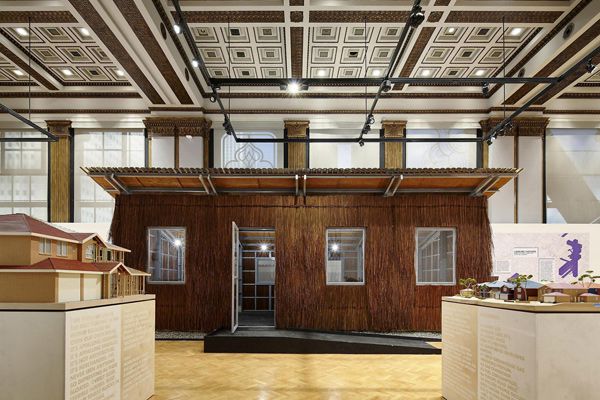Could renovating McMansions provide the key to sustainable living? Naomi Russo chats to otherothers’ Grace Mortlock and David Neustein about the possibilities of the Offset House.

March 16th, 2016
Hero Image: Copyright Tom Harris
Not many designers envision their projects as something for DIY-aficionados to undertake in the suburbs of Australia. However if a suburban resident transformed their McMansion into otherothers’ Offset House, the designers would be thrilled. The project, the only Australian design to be featured at the 2015 Chicago Biennale, is intended as a provocation, a comment on ways that the belittled burbs can become both beautiful and socially responsible.
Taking away the outer cladding, the Offset House showcases the stick framing at the core of most project homes, showcasing what Grace Mortlock and David Neustein identify as “modernism’s most successful and long-running project”. The zone between the outer and interior frames becomes a veranda, cutting back on the climate-controlled space within the home.
“The vast majority of Australians live in air-conditioned boxes” says Mortlock, arguing that the relationship between environmental needs and architecture has been lost. “The very early settlers’ architecture evolved’, Neustein adds, with buildings “responding to problems in certain ways”. That relationship of necessity, he believes, has been lost.
As suburban homes equal out in price with city apartments and utility costs rise, some ageing Australians are stuck in their homes, the design duo argue. The Offset House could also be an antidote to some of those concerns, opening up the possibility for co-habiting or subdividing. It, or something like it, could also provide a solution to the growing number of young people unable to afford a home. “We’re dealing with a diminished set of expectations” says Neustein. In response, he adds, architects “need to find ways to work effectively despite limitations.”
Part of answering these problems, the pair believe, is overcoming the historically difficult relationship between suburbs and architecture. Neustein sees this often troubled relationship as somewhat cyclical. Developers “produce buildings far more cheaply than architects can touch” he says, which has meant repetitions of similar styles with no architects involved. In response, he adds, there has been a “rearguard action” where the suburbs became known to architects as irredeemable. If sustainable living is to be achieved however, the suburbs – where most Australians live, need to be considered.
Nevertheless, two are quick to add that the Offset House was not conceived as the sole answer to all these weighty problems. Instead, with its bold design and openness to possibilities, it’s intended, Neustein says “as a way of raising a set of certain issues.” The pair plan to continue discussing these concerns, with an exhibition at RMIT focusing on sustainability and architecture planned for later this year.
Other Architects – otherothers
otherarchitects.com/otherothers
A searchable and comprehensive guide for specifying leading products and their suppliers
Keep up to date with the latest and greatest from our industry BFF's!

Marylou Cafaro’s first trendjournal sparked a powerful, decades-long movement in joinery designs and finishes which eventually saw Australian design develop its independence and characteristic style. Now, polytec offers all-new insights into the future of Australian design.

Create a configuration to suit your needs with this curved collection.

Suitable for applications ranging from schools and retail outlets to computer rooms and X-ray suites, Palettone comes in two varieties and a choice of more than fifty colours.

In the pursuit of an uplifting synergy between the inner world and the surrounding environment, internationally acclaimed Interior Architect and Designer Lorena Gaxiola transform the vibration of the auspicious number ‘8’ into mesmerising artistry alongside the Feltex design team, brought to you by GH Commercial.

Developing an Italian-made bathroom tapware range that encapsulates the meaning of “style” is how the Abey’s Gareth Ashton Stile Range was born.
The internet never sleeps! Here's the stuff you might have missed

We spoke with George Fleck, Vice President and Global Brand Leader of W Hotels, about the intermingling of hotel and hospitality design trends.

Paola Lenti recently unveiled its latest indoor and outdoor collections with dedece in Melbourne and in Sydney, where we sat down with Anna Lenti.